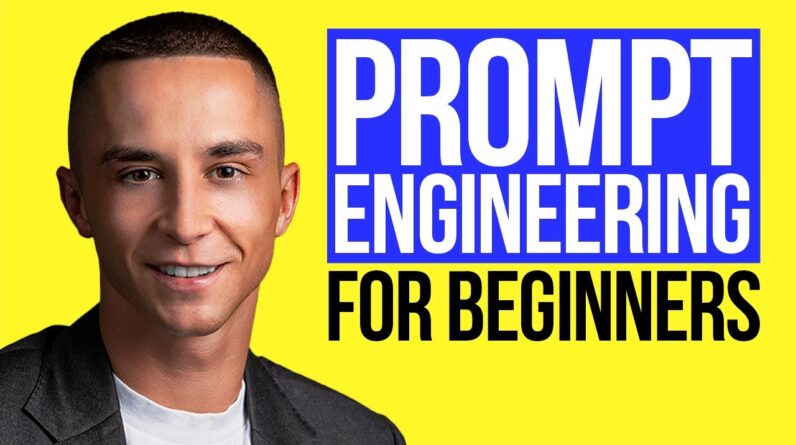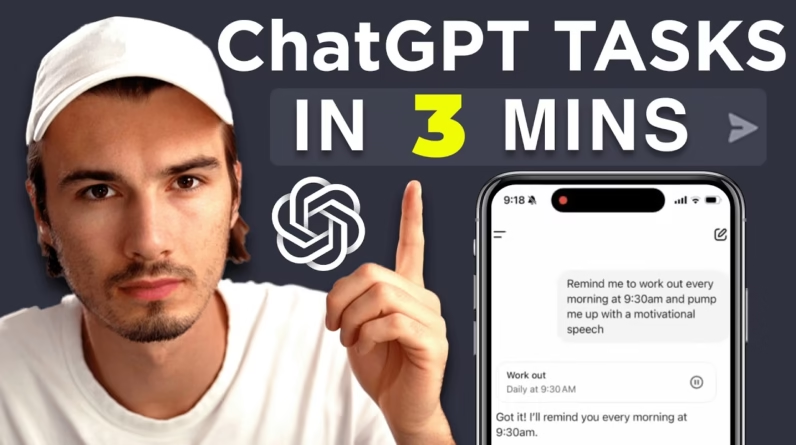
Mastering prompt engineering can significantly enhance your interactions with AI systems like GPT-4. This guide is designed for beginners, offering a straightforward approach to understanding the art of crafting effective prompts that can lead to exceptional outputs. Each section breaks down key concepts such as defining prompt engineering, exploring the OpenAI Playground, and discussing various techniques like role prompting and shot prompting.
Throughout this article, you’ll learn essential skills to elevate your understanding of AI applications without needing prior coding experience. By digging into the most effective strategies, you’ll discover how to create value in your career or business while tapping into exciting opportunities that prompt engineering provides. Get ready to unlock the potential of AI through the power of well-crafted prompts!
Table of Contents
Master Prompt Engineering: A Full Guide
Understanding Prompt Engineering
Definition of Prompt Engineering
Prompt engineering is the art of crafting instructions for AI systems, particularly language models like GPT-4, to complete tasks effectively. It involves carefully framing queries or commands so that the AI can interpret them accurately. A well-structured prompt can significantly enhance the quality of the output, whereas poorly constructed prompts may lead to misleading or nonsensical responses. Essentially, you can think of it as tuning your communication with AI to ensure that your intended message is received clearly.
Importance of Prompt Engineering in AI
Prompt engineering is an essential skill in today’s AI landscape. As businesses and individuals increasingly rely on AI technologies, the ability to create effective prompts ensures that you can leverage these tools to their fullest potential. By mastering prompt engineering, you can unlock new capabilities in AI, making it a highly sought-after skill across various industries. This is especially true in 2023, where the demand for efficient use of AI technologies has skyrocketed.
Historical Context and Development
Prompt engineering has evolved alongside the development of AI and machine learning. As early AI models were introduced, users quickly discovered that the way inputs were formulated directly affected the outputs. Over time, the concept of crafting optimal prompts became well recognized as a necessary skill to maximize AI performance. Initially an informal practice, prompt engineering gained prominence with the rise of advanced models like GPT-3 and GPT-4, leading to the establishment of formal methodologies and best practices in the field.
The Fundamentals of Effective Prompting
Characteristics of a Good Prompt
An effective prompt possesses several key characteristics. Firstly, it should be clear and concise, avoiding unnecessary complexity that could confuse the AI. Secondly, a good prompt is specific; it provides adequate context to guide the AI towards the desired outcome. Moreover, it should be flexible, allowing the AI to generate varied responses while still remaining within the expected boundaries. Lastly, a well-crafted prompt includes explicit instructions that help the model understand the task’s requirements.
Common Mistakes in Prompt Crafting
When crafting prompts, it’s easy to make mistakes that hinder their effectiveness. One common error is vagueness; a prompt that lacks detail can lead to irrelevant or off-target responses. Another frequent misstep is overloading the prompt with too much information, which can overwhelm the AI and produce subpar results. Other mistakes include failing to specify the expected format for the answer, using ambiguous language, or neglecting to provide examples when necessary.
Strategies for Improvement
Improving your prompt engineering skills involves ongoing practice and refinement. Start by experimenting with different structures and phrasings to see how they affect the output. Seek feedback on your prompts from peers or online communities focused on AI technologies. Additionally, studying successful use cases can provide insights into effective prompting techniques. Lastly, remember to continuously evaluate the outputs you receive and adjust your methodologies accordingly.
Tools for Prompt Engineering
Overview of OpenAI Playground
The OpenAI Playground is a versatile platform where users can interact with AI models directly. It serves as a testing ground for prompt engineering, allowing you to experiment with various inputs and settings. The playground provides an intuitive interface that helps new users familiarize themselves with how AI models work and how to tune them effectively for different tasks.
Exploring ChatGPT vs. OpenAI Playground
While both ChatGPT and the OpenAI Playground utilize the same underlying AI models, they are different in terms of functionality and ease of use. ChatGPT is a user-friendly application designed for everyday interactions, making it simple for users to engage in conversational AI. In contrast, the OpenAI Playground allows for deeper exploration and manipulation of model parameters, providing more control and flexibility. This separation is crucial for developers and businesses looking to build scalable AI applications, as the playground offers access to base models in their natural state.
Other Tools and Resources Available
Beyond the OpenAI Playground, there are numerous tools and resources available for aspiring prompt engineers. These include API access to various AI platforms, community forums for shared learning, and software development kits (SDKs) that provide additional functionalities. Educational resources such as online courses, workshops, and instructional videos can also aid in your learning journey.

Types of Prompting Techniques
Role Prompting in Depth
Role prompting is a technique where you set specific roles or personas for the AI to assume when generating responses. This can help guide the AI’s tone and style to align better with your expectations. For instance, instructing the AI to act like a math tutor or a creative writer can result in more relevant and tailored outputs, as it frames its responses through the lens of the defined role.
Shot Prompting: Zero-shot, One-shot, Few-shot
Shot prompting involves providing the AI with varying amounts of context before asking for a response.
- Zero-shot prompting presents a task without any examples, relying solely on the AI’s existing knowledge.
- One-shot prompting offers one clear example to illustrate the desired output, while
- Few-shot prompting supplies several examples, enhancing the AI’s understanding of the task and its expected outcomes. This technique is particularly useful for guiding the AI in more complex scenarios where nuances matter.
Chain of Thought Prompting Explained
Chain of thought prompting is designed to encourage the AI to process information step by step. By explicitly asking the AI to explain its reasoning or to break down a problem into manageable pieces, you can improve accuracy, especially in tasks requiring logical reasoning or arithmetic. This technique fosters deeper engagement with the task at hand, leading to clearer and more accurate outputs.
Executing Prompts in Applications
Integrating Prompts into Projects
Integrating prompts into your projects involves embedding them into existing workflows or applications. Whether you’re developing chatbots, content generation tools, or data analysis software, effective prompt engineering plays a vital role in defining how the AI interacts with users or processes information. A well-structured prompt serves as the bridge between human intentions and AI capabilities.
Testing and Tweaking Prompts
Once you’ve implemented prompts, continuous testing and refinement are crucial. This process includes not only running prompts through the AI but also analyzing the outputs to identify areas for improvement. By systematically tweaking prompts and observing their effects on responses, you can fine-tune your approach to optimize performance.
Monitoring Output Quality
Maintaining high output quality requires ongoing monitoring of the AI’s responses. Regularly assess whether the AI is meeting the expectations set out in the prompts and make note of any discrepancies. By analyzing patterns in failures or inefficiencies, you can adjust your prompting strategies to ensure that the AI reliably produces high-quality outputs.
Market Trends in Prompt Engineering
Current Demand for Prompt Engineers
As AI technology rapidly advances, the demand for skilled prompt engineers is growing exponentially. Businesses across various sectors are seeking individuals who can harness AI capabilities to drive efficiency, enhance customer engagement, and develop innovative solutions. This trend indicates that mastering prompt engineering can significantly boost your career prospects.
Freelance Opportunities and Platforms
Many prompt engineers are finding lucrative freelance opportunities on various platforms. Websites like Upwork, Fiverr, and specialized tech job boards often showcase projects seeking AI expertise, including prompt development. These opportunities allow you to build a portfolio while providing services that are increasingly in demand.
The Future of Prompt Engineering Careers
The future of prompt engineering looks promising. As AI integration becomes more ubiquitous, the skills associated with effective prompt crafting will be valuable assets in many careers. From marketing to software development, organizations will increasingly recognize the importance of skilled prompt engineers. This evolving landscape presents an exciting arena for those willing to invest in developing their prompt engineering skills.
Advanced Techniques for Experienced Users
Fine-tuning Prompts for Specific Outcomes
Once you’ve gained experience with basic prompting, you can explore fine-tuning your approaches to achieve specific outcomes. This includes adjusting wording, structure, and the amount of context provided. Through iterative refinements, you can zero in on the exact prompts that yield optimal performance for particular tasks or use cases.
Leveraging API Access for Enhanced Result Manipulation
Having access to AI APIs offers more control over output manipulation. By leveraging endpoints for different models and customizing parameters, you can create more nuanced and dynamic interactions. This level of proficiency allows you to build more sophisticated applications that can meet specific user needs efficiently.
Ethical Considerations in Prompt Engineering
As with any technology, ethical considerations are paramount in prompt engineering. Understanding the implications of how you instruct AI is crucial, especially regarding bias, misinformation, and user privacy. Responsible prompt engineering involves being aware of these factors and striving to create prompts that promote fairness and accuracy.
Creating New Applications via Prompt Engineering
Identifying Market Gaps
Exploring new applications of prompt engineering starts with identifying market gaps. This involves analyzing current trends and user needs to discover opportunities where effective prompting can solve problems or enhance existing tools. Engaging deeply with target audiences and conducting thorough research will enable you to spot areas ripe for innovation.
Developing Unique Tools Based on Prompting
Once you’ve identified a market gap, the next step is developing unique tools based on your insights. Whether it’s a content generation tool, a chatbot for customer service, or an analytics assistant, your ability to craft effective prompts will play a vital role in the tool’s success. Focus on combining your prompt engineering skills with user-friendly design to create a standout application.
Case Studies: Successful Applications and Startups
Successful applications of prompt engineering provide valuable learning experiences. Studying case studies of startups that have utilized effective prompting reveals practical insights and innovative strategies. These examples can inspire your projects and show how thoughtful prompt creation can lead to successful AI implementations.
Learning and Practicing Prompt Engineering
Key Learning Resources and Guides
To hone your prompt engineering skills, various learning resources are available. Books, online tutorials, and free guides can provide foundational knowledge. Delving into industry blogs and following AI experts on social media platforms can also keep you updated with the latest trends and techniques in prompt engineering.
Online Courses and Workshops
Participating in online courses and workshops can accelerate your learning. Many educational platforms offer structured programs that cover prompt engineering in depth. These courses often include hands-on exercises, providing you with practical experience and feedback from instructors.
Community Engagement and Networking
Engaging with communities focused on AI and prompt engineering is an excellent way to learn and grow. Online forums, social media groups, and local meetups provide opportunities to exchange ideas, seek advice, and collaborate with others who share your interests. Networking is also an important way to find job opportunities and stay ahead in this rapidly evolving field.
Conclusion
Recap of Key Points
In summary, mastering prompt engineering can significantly enhance your ability to harness AI technologies effectively. Key insights include the importance of clear and structured prompts, the exploration of various prompting techniques, and the need for continuous learning and adaptation. As the market for skilled prompt engineers expands, your ability to craft effective prompts may open doors to new career opportunities.
Encouragement to Start Crafting Prompts
Now is the perfect time to dive into prompt engineering! Begin experimenting with prompts today, utilizing the tools and techniques outlined in this guide. The more you practice, the more skilled you will become, enabling you to unlock the full potential of AI in your projects.
Future Outlook on Prompt Engineering Skills
Looking ahead, the skills associated with prompt engineering will only grow in importance. As AI continues to integrate into various aspects of daily life and business, those proficient in crafting effective prompts will be at the forefront of driving innovation. Embrace this opportunity, and let your journey in prompt engineering begin!







